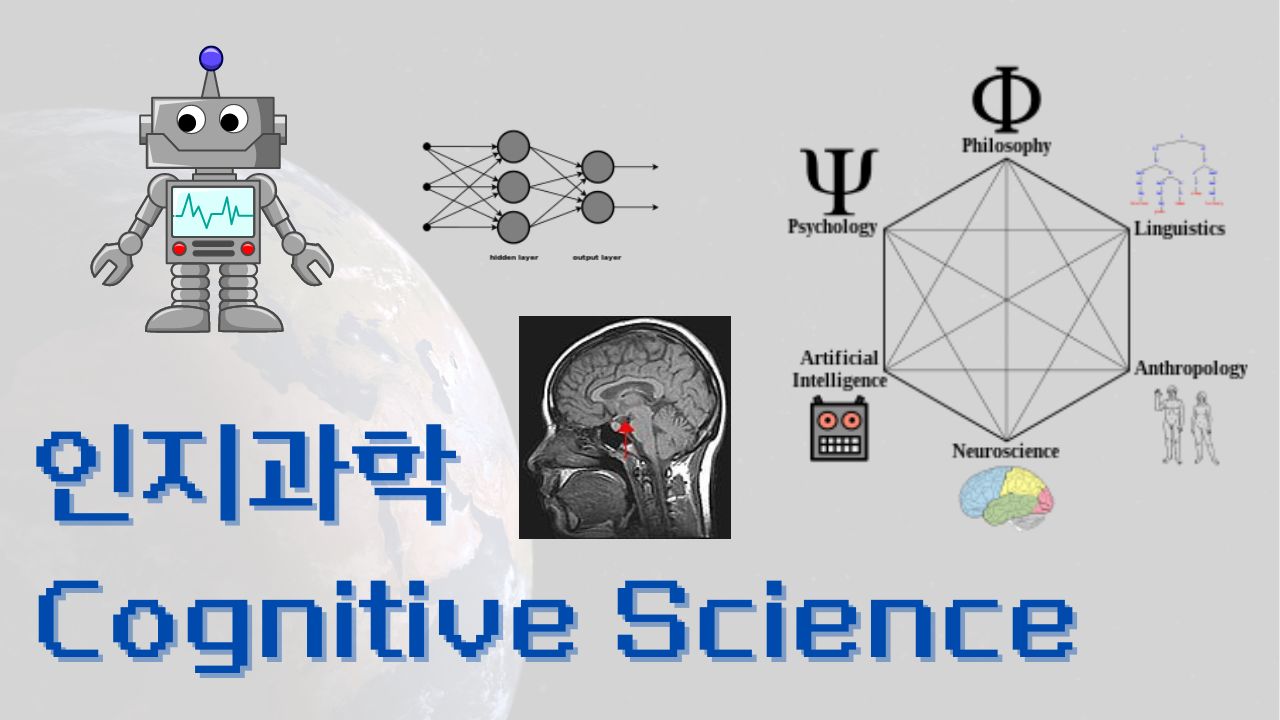Affective Neuroscience in a digital age
정서신경과학(Affective Neuroscience)에 대한 전반적인 설명입니다.
성균관대 우충완 교수님이 바이오의공학개론 수업에서 강의하신 내용을 요약정리 했습니다.
▶︎ What is emotion?
책 <감정은 어떻게 만들어지는가>는 감정을 다음과 같이 바라보고 있다.
- “It is widely agreed that emotion refers to a collection of psychological states that include subjective experience, expressive behavior (e.g., facial, bodily, verbal), and peripheral physiological responses(e.g., heart rate, respiration)”
- “It is also widely agreed that emotions are a central feature in any psychological model of the human mind”
- Affect가 먼저 일까? Cognition이 먼저 일까? Affect는 좋고 나쁨(호불호)이고, 이는 세포수준에서부터 고등생명체까지 모두가 갖고 있기 때문에 Affect가 먼저 일거라고 추측!
- “Beyond these two points of agreement, however, almost everything else seems to be subject to debate”
- 감정이 무엇인지는 감정이 어떻게 만들어지는지에 관한 이론마다 다르게 정의된다. 연구자마다 정의가 다르다.
▶︎ Theories of Emotion
(Gross and Barrett, 2011) 은 감정이론에 관한 리뷰논문이다. 감정이라는 하나의 주제를 놓고 논의된 여러 이론들의 공통점과 차이점을 보기에 큰 도움이 된다.


- 감정에 대한 4가지 이론
- Basic 6 Emotions (Paul Ekman)
- Sadness
- Joy
- Fear
- Disgust
- Anger
- Suprise
- Appraisal(평가, 해석) (James Gross)
- Process를 통해 emotion generation이 일어난다.
- Situation -> Attention -> Appraisal -> Response
- 관련 자료 : Clore, Gerald L., and Andrew Ortony. “Cognitive neuroscience of emotion.” (2000).
- Affective Computing이라는 분야도 있다.
- Psychological Construction
- (Russell, 2003)
- Traditional view: Emotion as a mediator
- Alternative view: Emotion as a construct
- Emotion은 만들어지고 Collection이다. 실체가 없고 사회
- (Russell, 2003)
- Social Construction
- Basic 6 Emotions (Paul Ekman)
- 감정이론 비교. 특정 이론이 절대적으로 옳다고 할 수 없다. 각각의 이론을 지지하는 증거들이 존재하기 때문이다.

▶︎ What is the common theme here?
이러한 여러 감정이론 가운데 우충완 교수님은 Appraisal과 Psychological Construction 중간 쯤의 관점을 가지고 있다.
Basic Theories 쪽은 연구 역사가 오래된 만큼 많은 연구가 진행되어 왔다. 그러면 Psychological Construction과 Social Construction쪽에는 어떠한 합의점과 논쟁거리가 있는지 살펴보자.
-
Emotions are more malleable than you think!
- Even for pain
- 같은 자극에 대해서도 자주 변한다.
-
Against Dualism(이원론)
- Emotion generation vs. regulation?
- 여태껏 generation과 regulation은 서로 다르다고 생각했다. 이분법적인 사고. 하지만, 이러한 접근에는 한계점이 명확하고 이 둘이 다르지 않다는 증거들이 속속 등장하고 있다.
- Cognition vs. Emotion?
- 이 둘을 꼭 구분해야하는가?
- Body vs. mind?
- Emotion generation vs. regulation?
이제 하나씩 살펴보자.
◼︎ Emotions are more malleable than you think! (The case of pain)
∙ Pain pathway v1.0
- Descartes’ pain pathway (혹은 bell theory, specificity theory라고도 부름)

- 외부자극을 받으면 사람은 수동적으로 그 자극에 따른 통증을 느낀다. 데카르트가 처음 주장한 이론이지만 지금까지도 많은 사람들이 이렇게 생각한다.

- 이 그림은 Pain modulatory pathways을 나타낸다. (Zhou & Verne, 2014)
- 왼쪽은 Ascending pain pathway이며 pain을 passive하고 단순히 response to noxious input으로만 본다. 이것만 보면 데카르트 관점이다.
- 오른쪽은 Descending pain pathways이다. 이러한 pathway가 새로운 관점이다. passive하지 않고 active하게 pain을 느낀다.
- 이 그림은 Pain modulatory pathways을 나타낸다. (Zhou & Verne, 2014)
- pain pathway 1.0에 따른 치료법(Treatment)
- Pain연구의 기념비적인 논문이 바로(Melzack, 1965) 이다.
- bell theory에 근거해서 pain pathway를 실제로 잘랐다.
- 자른 결과
- Selective benefits (They don’t always work)
- Sometimes makes pain worse
∙ Pain pathway v2.0
- Brain filters, selects, and modulates noxious inputs
- Pain은 단순한 response to noxious input이 아니라 그 이상이다!
- Brain의 역할이 굉장히 중요하다.
- 그렇다면 brain이 중요하다는 증거는 무엇일까?
- Evidence 1: Endogenous fluctuations in pain experience
- 한 사람에게 동일한 온도의 열자극을 주어도 느끼는 통증 정도는 매번 다르다.
- Woo, C., Schmidt, L., Krishnan, A. et al. Quantifying cerebral contributions to pain beyond nociception. Nat Commun 8, 14211 (2017). https://doi.org/10.1038/ncomms14211
- Evidence 2: Just rethinking (cognitive self-regulation) can change pain
- 단순히 머리로 상상하는 것만으로도 느끼는 통증 정도가 매번 다르다.
- Woo CW, Roy M, Buhle JT, Wager TD (2015) Distinct Brain Systems Mediate the Effects of Nociceptive Input and Self-Regulation on Pain. PLOS Biology 13(1): e1002036. https://doi.org/10.1371/journal.pbio.1002036 -> Brain이 바뀐다
- (replication) Matthewson, Gordon M.; Woo, Choong-Wan; Reddan, Marianne C.; Wager, Tor D., Cognitive self-regulation influences pain-related physiology, PAIN: October 2019 - Volume 160 - Issue 10 - p 2338-2349 doi: 10.1097/j.pain.0000000000001621 -> Body(physiology)가 바뀐다.
- Evidence 3: How other people rated can change pain
- 다른 사람이 이 자극에 대해서 얼만큼 아팠했는지 보여주고 그 다음 똑같은 자극을 주면, 둘의 차이가 엄청 난다. 즉, 다른 사람에 영향을 많이 받는다는 뜻. -> social cue effects
- Koban L, Wager TD. Beyond conformity: Social influences on pain reports and physiology. Emotion. 2016;16(1):24-32. doi:10.1037/emo0000087
- Evidence 4: Expectation (and placebo effects) can change pain
- Pain predictive cues는 Low-pain cue와 High pain cue로 나뉘고 Heat intensity는 Low pain/Medium pain/High pain으로 나뉜다. cue를 다르게 주면 같은 온도라도 다르게 느낀다!
- Atlas, L. Y., Bolger, N., Lindquist, M. A., & Wager, T. D. (2010). Brain mediators of predictive cue effects on perceived pain. J Neurosci, 30(39), 12964-12977. doi:10.1523/JNEUROSCI.0057-10.2010
- Evidence 5: Perceived control can change pain
- 내가 이 통증을 선택했는지 아닌지에 따라서 느끼는 게 다르다. 상황에 대한 통제력 -> Perceived control effects
- Woo, C., Schmidt, L., Krishnan, A. et al. Quantifying cerebral contributions to pain beyond nociception. Nat Commun 8, 14211 (2017). https://doi.org/10.1038/ncomms14211
- Evidence 6: Distraction can change pain
- 아플 때 distraction해서 주의(attention)를 환기시키면 덜 아프게 느낀다.
- cognitive load에 높아질 수록 덜 아프게 느낀다.
- Evidence 1: Endogenous fluctuations in pain experience
- Pain as a multidimensional experience
- Melzack이 Pain perception에 3 가지 components가 있다고 주장했다.(Melzack, 2005)
- Cognitive Components
- Sensory Components
- Affective Components
- (Wager & Woo, 2015) 에서도 System-level processes를 주장함.

- Decision
- Meaning
- Sensory
- Affective or motivational
- 좋은 진통제를 만들기 위하여 nociceptive receptor를 연구하는거 이외에 이러한 component를 어떻게 조절해서 통증을 줄일 수 있을지를 같이 연구해야된다.
- 미국에서는 마약성 진통제 중 하나인 opioid에 대한 중독 사례가 급증해서, 사회적 문제로 이어졌다. 백악관 성명.
- 대체의학의 효과도 제대로 입증된게 없다. 예를 들면, 침(acupuncture), 명상(meditation), 심리치료(psychotherapy)가 pain을 줄여주긴 하는데 정확히 어떤 component에 의해서 효과를 내는지 제대로 밝혀야한다.
- Melzack이 Pain perception에 3 가지 components가 있다고 주장했다.(Melzack, 2005)
- Treating pain by altering multidimensional contexts
- (Wager & Atlas, 2015)

- 병원에서 치료할 때 contexts가 굉장한 효과를 낸다.
◼︎ Against Dualism(1) : Emotion generation vs. regulation?
Dominant view
- Dual system : Cortical (regulation) vs. sub-cortical (perception)
- brain의 sub-cortical area 중 특히 limbic system같은 곳에서 NACC나 amygdala 영역이 emotion을 generate한다고 한다. 근데 이때, 이 generation을 prefrontal cortex에서 suppress하거나 regulate한다. 그러던 중 이러한 prefrontal-subcortical circuit이 깨지면 self-regulatory failure가 발생한다.
- (Heatherton & Wagner, 2011), (Ochsner et al, 2012), (Wager et al, 2008)
- promising view
- 이때 뭐가 regulated되는건가? 이때 emtion이 무엇인가?
- Emotion as coordinated brain responses across multiple-systems!
- Emotions are arbitrary “label” for patterns of coordinated brain processes
- (Barrett et al, 2006, 2009, 2013), (Lindquist et al, 2011, 2012), (J. Price, 1999), (Bandler, 2000)
Our approach : Develop good markers first, then study the effects of regulation
- 두 가지 관점 중에서 우충완 교수님 연구실은 promising view관점인데 biomakers를 개발하는데 집중하고 있다.
- Woo CW, Roy M, Buhle JT, Wager TD (2015) Distinct Brain Systems Mediate the Effects of Nociceptive Input and Self-Regulation on Pain. PLOS Biology 13(1): e1002036. https://doi.org/10.1371/journal.pbio.1002036
- NPS(Wager et al, 2013) 라는 pain biomarker는 local area가 아니라 area간의 networks라는 관점에서 개발됐다. 이렇게 개발한 NPS를 가지고 이 논문의 실험(evidence2; imagination)에 적용해보니까, brain이 변화하긴 하는데 NPS의 pain system이 변화되는게 아니었다!
- 오히려, emotion의 value(가치평가)에 중요한 영역이라고 알려진 Nac와 vmPFC가 mediate해서 통증regulated된 것이다.
- 즉, Cognitive-self regulation때문에 thalamus와 insula같은 영역이 regulated되서 통증이 낮아진게 아니라, Cognitive self regulation과 pain system이 동시에 통증을 낮추는데 효과를 낸 것이다.
- There can be multiple independent neural pathway(ingredients) to construct pain and emotion experience (more constructionist view)
- 감정 조절은 또다른 감정을 만들어낸다.
◼︎ Against Dualism(2) : Cognition vs. Emotion?
- How emotions are made?
- “Through Prediction, your brain constructs the world you experience”- Lisa Feldman Barrett.
- Pain and pain regulation as predictive coding (Bayesian update)
- prediction이라고 하는게 되게 이성적일거 같지만, 본능적이고 무의식적으로 우리 뇌에서 일어난다.
- Tabor A, Thacker MA, Moseley GL, Körding KP (2017) Pain: A Statistical Account. PLOS Computational Biology 13(1): e1005142. https://doi.org/10.1371/journal.pcbi.1005142
- Büchel C, Geuter S, Sprenger C, Eippert F. Placebo analgesia: a predictive coding perspective. Neuron. 2014;81(6):1223-1239. doi:10.1016/j.neuron.2014.02.042
- Treatment context as multidimensional priors
- Geuter, Koban, & Wager, 2017
- treatment context(약을 먹는 상황)
- no-treatment context(약을 안먹는 상황)
- Emotion as a meaning construction
- Emotion as visceral-affective-conceptual pattern generation process
◼︎ Against Dualism(3) : Body vs. Mind?
- Chronic pain? Issues in internal contexts
- chronic pain(만성통증)은 통증이 6개월 이상일 때 만성통증이라고 한다. 3개월 정도면 sub acute pain이고, 다쳤을 당시에 아픈건 acute pain이라고 한다.
- Javeria A. Hashmi, Marwan N. Baliki, Lejian Huang, Alex T. Baria, Souraya Torbey, Kristina M. Hermann, Thomas J. Schnitzer, A. Vania Apkarian, Shape shifting pain: chronification of back pain shifts brain representation from nociceptive to emotional circuits, Brain, Volume 136, Issue 9, September 2013, Pages 2751–2768, https://doi.org/10.1093/brain/awt211
- subacute pain 환자들을 대상하고 longtitudinal하게 scan을 했다. 즉, 주기적으로 여러번 찍었다.
- 처음에는 sensory area가 significant하게 activation됐다고 나왔는데, 나중에는 emotional area가 activation 됐다
- 나중에 활성화된 영역은 default mode networks(다른 말로 self-referencial process)이다.
- 이 말은 Body에서 Mind로 shape shifting된다는 뜻이다. 통증의 원인이 바뀐다는 이야기.
- The effects of concepts on bodily responses
- COCOAN lab에서 Free-Association Semantic Task(FAST)라는 새로운 task를 개발했다.
- 생각의 흐름
- CNS control ANS: Visceromotor network
- Saper CB. The central autonomic nervous system: conscious visceral perception and autonomic pattern generation. Annu Rev Neurosci. 2002;25:433-469. doi:10.1146/annurev.neuro.25.032502.111311
- ANS을 CNS가 조절한다. 즉, 뇌가 몸을 조절한다.
- Central Autonomic Nervous System이라는 개념을 만듬!
▶︎ COCOAN lab에서 하는 일
- Neuroimaging-based pain decoding
- Decoding internal thoughts and emotions
- Translational neuroimaging
- Neural basis of pain and emotion regulation
◼︎ 연구 방향!
-
Emotions are more malleable than you think! -> Effective self-regulation (science of behavioral changes)
-
Against Dualism
-
Emotion generation vs. regulation? -> Developing neuroimaging-based markers for pain emotions
-
Cognition vs. Emotion? -> Modeling dynamic interactions between cognition and emotion, especially predictive coding and internal thoughts
-
Body vs. mind? -> Understanding how the mind influences the body (mind-body interaction)
-





댓글남기기